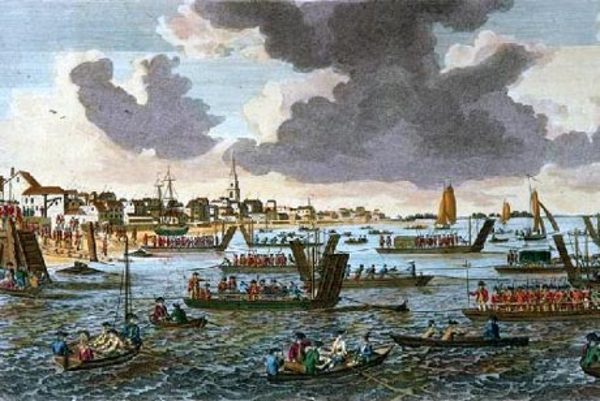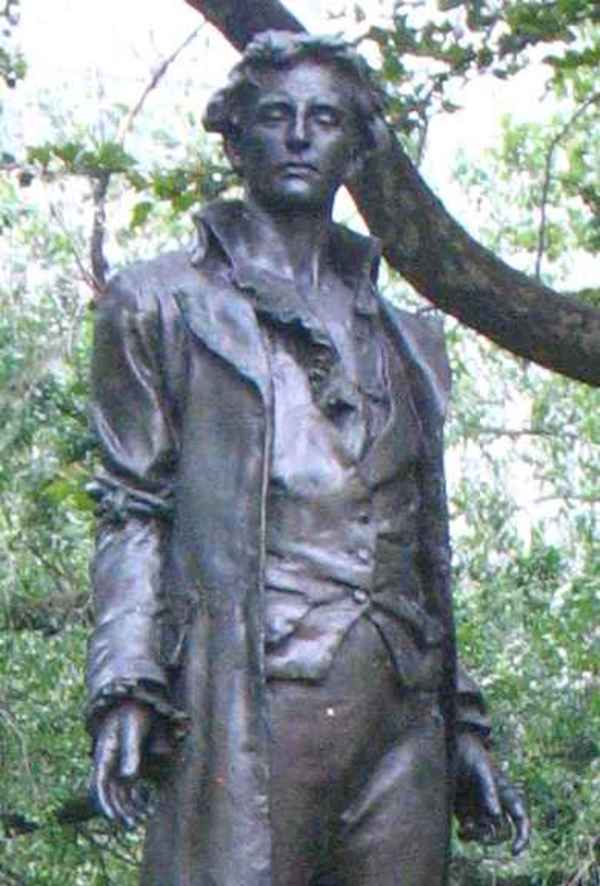On September 15, 1776, British forces occupied New York City during the American Revolution by making a sneak amphibious landing at present-day Manhattan. See if you can fight through these trivia questions about this important event in American history.
What Problem Faced the Colonials in Defending the City?
 The blockade and steady advance by British and German troops at Kip's Bay, along with a constant barrage by British warships, made it necessary for American colonial soldiers to retreat.
Following the Battle of Long Island, Washington considered leaving New York and possibly even burning it down because it was believed that British troops, led by General William Howe, would be coming to take over the city. Washington feared that the superior British navy might blockade New York, thus isolating the city from communications with other states.
The blockade and steady advance by British and German troops at Kip's Bay, along with a constant barrage by British warships, made it necessary for American colonial soldiers to retreat.
Following the Battle of Long Island, Washington considered leaving New York and possibly even burning it down because it was believed that British troops, led by General William Howe, would be coming to take over the city. Washington feared that the superior British navy might blockade New York, thus isolating the city from communications with other states.
The British brought along heavy forces that would have been difficult if not impossible to defend against. In the end, General Putnam was left behind with 5,000 troops to protect the city and the lower area of Manhattan, along with General Nathaniel Greene with a similar contingent of troops. There really wasn't any battle. The Patriots fled to the northern part of Manhattan called Harlem Heights. General Howe, Clinton and Cornwallis moved into the Murray house where General Washington had been staying.
How Was the Invasion Conducted by the British? General Howe attacked the city using five warships while 84 flatboats containing British and German soldiers advanced toward Kip’s Bay. A heavy naval barrage by the British made it impossible to see and caused the colonial troops to scatter and panic. While Generals Washington and Putnam attempted to rally the fleeing men, it was to no avail. Washington and Putnam themselves were forced to retreat, with Putnam leaving behind supplies and more than 50 cannons. The British quickly took over the city, and on September 21, a large fire destroyed about one-quarter of New York City. New York City would remain in British hands until the end of the war.
Which American Patriot Was Executed Following the British Invasion of New York?
 A statue of Nathan Hale stands in City Hall Park in New York City as a tribute to his patriotism.
Captain Nathan Hale, a Yale University graduate, was hanged by the British for spying shortly after the invasion. Hale had been sent by General Washington behind the enemy lines in an attempt to find out the location of the British army. He had volunteered for the assignment a few days before General Howe’s invasion of New York. Conflicting stories on how Hale was discovered include that he was turned in by a cousin who was loyal to the crown and that he had been recognized while in a tavern and turned in. The result was that he was executed on September 22, 1776, close to a public house called The Dove Tavern. Captain Hale was 21 years old.
A statue of Nathan Hale stands in City Hall Park in New York City as a tribute to his patriotism.
Captain Nathan Hale, a Yale University graduate, was hanged by the British for spying shortly after the invasion. Hale had been sent by General Washington behind the enemy lines in an attempt to find out the location of the British army. He had volunteered for the assignment a few days before General Howe’s invasion of New York. Conflicting stories on how Hale was discovered include that he was turned in by a cousin who was loyal to the crown and that he had been recognized while in a tavern and turned in. The result was that he was executed on September 22, 1776, close to a public house called The Dove Tavern. Captain Hale was 21 years old.
What Stopped the British Invasion From Becoming a Complete Rout? In the same way General Howe demonstrated after the Battle of Long Island, he halted the advance of British troops to wait for reinforcements. At the time, General Putnam’s troops were spread out over a wide area. Had Howe continued to push forward, he might have captured or defeated Putnam’s entire command, which would have been a devastating blow to the American colonists. However, after it turned dark, Howe and his troops lay back while American troops moved on to join their army, allowing them to regroup and fight another day.




